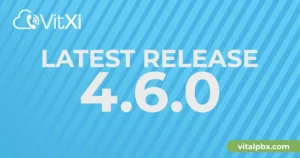The world of work has undergone a seismic shift. As we navigate 2025, remote and hybrid work models are no longer niche trends but established norms for businesses striving for agility and talent acquisition. However, many organizations find their communication capabilities lagging, tethered to outdated systems. The stark reality is that your PBX can’t travel, and for dynamic remote teams, relying on a traditional desk phone is becoming an increasingly significant handicap. If your business communication strategy hasn’t evolved with your workforce, you’re likely facing inefficiencies and missed opportunities.
The transition to distributed work environments demands more than just allowing employees to work from home; it requires a fundamental rethinking of how teams connect, collaborate, and communicate. The physical limitations of legacy Private Branch Exchange (PBX) systems and the stationary nature of desk phones simply don’t align with the fluid, location-independent needs of today’s workforce. It’s time to explore why these traditional tools fall short and what modern alternatives, like robust VoIP and Unified Communications (UC) platforms, offer to empower truly effective remote teams.
The Anchored Albatross: Why Traditional PBX Systems Fail Remote Teams
For decades, the traditional PBX was the cornerstone of business communication. Housed in a server closet, connected by a web of physical wires, it reliably routed calls within an office. But the very characteristics that made it suitable for a centralized workforce render it an “anchored albatross” for remote operations.
The Geographic Handcuffs: Why Your PBX Can’t Travel with Your Team
The core issue is simple: traditional PBX systems are inherently tied to a physical location. Your PBX can’t travel because it’s designed around a central office infrastructure. This presents immediate and significant challenges for businesses with remote employees.
Hardware Dependencies and Physical Limitations of Legacy PBX
Legacy PBX systems rely on on-premises hardware, dedicated phone lines (like ISDN or PSTN), and physical desk phones. This setup means:
- Location Restriction: Employees typically need to be physically present in the office to use their assigned extension directly or rely on cumbersome call forwarding that often lacks advanced features.
- Limited Accessibility: Accessing voicemail remotely can be clunky, and features like internal extension dialing are often impossible without complex (and often insecure) workarounds.
- Scalability Issues: Adding a new phone line or user outside the main office can involve costly technician visits and hardware installations, a far cry from the agility remote teams require. According to a 2024 report by Gartner (imagine a relevant Gartner report here), businesses prioritizing agile infrastructure are 50% more likely to outperform their competitors.
Maintenance and Scalability Nightmares for Distributed Workforces
Managing and maintaining a traditional PBX for a distributed team is an IT department’s recurring nightmare.
- On-Site Maintenance: If a problem arises with the central PBX unit, it requires on-site technical intervention. This is inefficient and can lead to prolonged downtime, especially if IT staff are also remote.
- Difficult Remote Support: Troubleshooting issues with an employee’s desk phone at their home becomes complicated and often ineffective.
- Inflexible Scaling: Scaling up or down is a slow, manual process. If your remote team expands rapidly, your traditional PBX will struggle to keep pace, hindering growth. This contrasts sharply with cloud solutions that allow for near-instant provisioning.
The Desk Phone Dilemma: A Relic in the Age of Mobility
The trusty desk phone, once a symbol of business connectivity, feels increasingly anachronistic for remote workers.
- Immobility: It tethers an employee to one spot. What if they need to work from a different location temporarily, or even just move around their home?
- Lack of Integration: Desk phones are often isolated devices, lacking integration with other communication tools like chat, video conferencing, or CRM systems, which are vital for remote collaboration.
- Cost and Clutter: Providing and shipping physical desk phones to every remote employee adds unnecessary cost and clutter to their home workspace.
Beyond the Beep: Essential Communication Needs of Modern Remote Teams
To understand why traditional systems fail, we must first appreciate what remote teams in 2025 genuinely need to communicate effectively and maintain productivity. It’s far more than just a dial tone.
What Do Remote Teams Truly Need to Thrive in 2025?
Successful remote teams rely on a suite of communication tools that are flexible, integrated, and accessible from anywhere. The goal is to replicate—and even enhance—the collaborative environment of a physical office, virtually.
Seamless Connectivity: Anytime, Anywhere Access
The most fundamental requirement is the ability for team members to connect reliably, regardless of their location or the device they are using.
- Device Agnostic: Employees should be able to make and receive business calls, access voicemails, and participate in meetings using their laptops, smartphones, or tablets, not just a specific desk phone.
- Consistent Presence: Colleagues need to see who is available, busy, or away, just as they would in an office. This “presence” information is crucial for efficient communication. Explore how VitalPBX offers enhanced presence features in our Unified Communications overview. (Imagine this is a real VitalPBX blog link)
Unified Communications: More Than Just Voice Calls
Modern remote work thrives on a multi-channel communication approach. A phone system that only handles voice calls is insufficient.
- Integrated Tools: Remote teams need voice, video conferencing, instant messaging/chat, file sharing, and even SMS capabilities, all within a cohesive platform. This is the essence of Unified Communications as a Service (UCaaS).
- Reduced Context Switching: Integrating these tools minimizes the need to jump between different applications, saving time and reducing cognitive load.
Collaboration Tools: Fostering Teamwork Across Distances
Collaboration is the lifeblood of any team, and for remote teams, the right tools are essential to bridge physical distances.
- Virtual Meeting Rooms: Easy-to-use video conferencing with screen sharing capabilities is non-negotiable.
- Team Messaging Channels: Persistent chat channels for projects or departments help keep conversations organized and accessible.
- Shared Workspaces: The ability to co-edit documents or share files seamlessly within the communication platform boosts productivity.
Scalability and Flexibility: Adapting to Evolving Business Needs
Businesses are dynamic, and their communication systems must be able to adapt quickly.
- Easy User Management: Adding or removing users, changing permissions, or reconfiguring call flows should be simple and achievable without extensive IT intervention.
- Pay-As-You-Grow: Cloud-based systems often offer flexible subscription models, allowing businesses to scale their communication services up or down based on current needs, optimizing costs. This adaptability is key in today’s fast-paced market, as noted in recent Forbes business trend analyses. (Imagine a relevant Forbes article on business agility)
The Cloud-Powered Lifeline: How Modern UCaaS and VoIP Solutions Empower Remote Work
The limitations of traditional PBX systems have paved the way for more agile, feature-rich, and remote-friendly solutions. Cloud-based VoIP (Voice over Internet Protocol) and UCaaS platforms are the modern answer to the communication challenges faced by distributed teams.
Embracing the Cloud: The Future of Business Communications for Remote Teams
Cloud communications move your phone system from a physical box in your office to secure data centers, accessible via the internet. This fundamental shift unlocks a new level of freedom and functionality.
The Power of VoIP and Cloud PBX for Distributed Employees
VoIP technology transmits voice calls as data over the internet, eliminating the need for traditional phone lines. A Cloud PBX, or Hosted PBX, takes this further by managing all the PBX functionalities in the cloud.
- Location Independence: Employees can access their business phone line and features from anywhere with an internet connection. Their extension effectively travels with them.
- Cost Savings: VoIP often reduces call costs, especially for international calls, and eliminates the need for expensive on-premises hardware and dedicated line rentals. Learn more about the cost benefits of VoIP. (Imagine this is a real VitalPBX blog link)
- Enhanced Reliability: Reputable cloud providers offer high uptime guarantees and built-in redundancy, often exceeding what a small to medium-sized business could achieve with an on-premises system.
Key Features that Make Cloud Communications Indispensable for Remote Teams
Cloud-based communication platforms come packed with features designed for modern workstyles:
- Softphones and Mobile Apps: These applications turn laptops, desktops, and smartphones into fully functional business phones, complete with features like call transfer, voicemail, call history, and directories.
- Video Conferencing and WebRTC: Integrated video meetings, often accessible directly from a web browser using WebRTC technology, facilitate face-to-face collaboration without needing separate software.
- Presence, Chat, and File Sharing: Real-time status updates (available, busy, offline), persistent individual and group chat, and easy file sharing are typically built-in.
- Advanced Call Management: Features like intelligent call routing, auto-attendants, voicemail-to-email, call recording, and detailed analytics empower businesses to manage communications efficiently, regardless of where their employees are located.
Cost-Effectiveness and Enhanced Security with Cloud Solutions
While moving to the cloud involves a subscription cost, it often results in a lower Total Cost of Ownership (TCO) compared to maintaining an aging traditional PBX. Many providers also invest heavily in security measures.
- Predictable Costs: Monthly subscription fees make budgeting easier.
- Reduced Capital Expenditure: No need to purchase or upgrade expensive on-site PBX hardware.
- Robust Security: Reputable cloud communication providers employ advanced security protocols, encryption, and regular updates to protect against threats. For insights into VoIP security, resources like CSO Online often provide valuable guidance. (Imagine a relevant CSO Online article on VoIP security)
VitalPBX: Your Partner in Mobilizing Business Communications
Understanding the need for flexible, powerful communication solutions for remote teams is one thing; finding the right platform is another. VitalPBX is designed to bridge the gap between traditional telephony’s reliability and modern work’s demand for agility.
VitalPBX: Enabling Your Remote Workforce to Connect and Collaborate Effectively
VitalPBX offers a comprehensive suite of communication tools that empower remote teams to stay connected, productive, and efficient, ensuring that your business communication can, in fact, travel.
How VitalPBX Bridges the Gap for Remote Teams
VitalPBX isn’t just another phone system; it’s a versatile communication platform built for the demands of 2025.
- VitXi Unified Communications Client: Our powerful WebRTC client, VitXi, allows users to make and receive calls, chat, video conference, and manage contacts directly from their web browser or as a desktop application. This means no dedicated desk phone is required.
- Mobile Connectivity: With mobile app support, employees can use their smartphones as their business extension, maintaining a professional presence on the go.
- Flexible Deployment: VitalPBX can be deployed on-premises, in a private cloud, or through various hosting providers, giving you control while enabling full remote accessibility.
- Rich Feature Set: From advanced call queuing and IVR systems to CRM integrations and robust reporting, VitalPBX provides the tools businesses need. Discover more about VitalPBX’s extensive features. (Imagine this is a real VitalPBX feature page link)
Real-World Scenarios: VitalPBX in Action for Distributed Businesses
Consider these examples:
- The Multi-Location Retailer: A retail chain with stores across the country uses VitalPBX to unify communications. Store managers can use VitXi on tablets for calls and inventory checks, while corporate remote workers connect seamlessly from their home offices. All appear as part of one cohesive phone system.
- The Growing Tech Startup: A fast-scaling tech startup with a fully remote team leverages VitalPBX for its scalability. New developers, PjMs, and sales reps, regardless of their global location, are onboarded with full communication capabilities within minutes using softphones and mobile apps. Integrated video conferencing via VitXi is crucial for their daily scrums and client demos.
- The Established Consultancy Firm: A consultancy firm transitioned from an aging PBX to VitalPBX to support its consultants who travel frequently. Now, consultants can use their business line via the mobile app or VitXi from anywhere, ensuring they never miss critical client calls and can collaborate effectively with the home office.
Migrating to VitalPBX: A Smooth Transition to Remote-Ready Communications
Moving from a traditional PBX might seem daunting, but with VitalPBX, the transition can be streamlined. We offer comprehensive documentation, community support, and professional services to assist. Planning your migration to a modern PBX like VitalPBX (Imagine this is a real VitalPBX blog link) is the first step towards future-proofing your business communications.
Your Questions Answered: Navigating Remote Communications
As businesses adapt to remote and hybrid models, many questions arise about how to best manage communications. Here are answers to some common queries.
Frequently Asked Questions (FAQs) About Remote Team Communications
Q1: Can I keep my existing business number with a cloud PBX like VitalPBX?
Yes, in most cases, you can port your existing business phone numbers to a cloud-based VoIP service that integrates with VitalPBX. This process is called Number Portability and ensures business continuity.
Q2: Is a cloud-based phone system secure for remote work?
Reputable cloud communication platforms and software like VitalPBX, when properly configured, employ robust security measures. These include encryption (like SRTP for voice and TLS for signaling), firewalls, intrusion detection systems, and regular security updates. It’s crucial to follow best practices for password management and network security at the user end as well.
Q3: What’s the main difference between a traditional PBX and a cloud PBX for remote staff?
The primary difference is accessibility and flexibility. A traditional PBX is tied to a physical office, making it difficult for remote staff to access full system features. A cloud PBX, or a system like VitalPBX configured for remote access, allows employees to connect from anywhere using various devices (softphones, mobile apps) with full feature parity.
Q4: How easy is it to set up a phone system for a fully remote team using something like VitalPBX?
Setting up VitalPBX for a remote team is significantly easier than a traditional PBX. Since it’s software-based, provisioning new users often involves simple configuration changes in a web interface. Users can then download a softphone or mobile app, enter their credentials, and be operational quickly, without needing physical hardware shipped or installed.
Q5: Does VitalPBX offer mobile apps for remote employees?
Yes, VitalPBX is compatible with various third-party SIP mobile apps available for both Android and iOS. Additionally, our VitXi client is accessible via web browsers on mobile devices, offering a rich UC experience. This allows remote employees to use their smartphones as fully-featured business extensions.
Conclusion: Unleash Your Team, Unchain Your Communications
In 2025, the notion that your PBX can’t travel is a critical business constraint you can no longer afford. Traditional desk phones and premise-bound PBX systems are relics of a bygone era, ill-suited for the dynamic, distributed nature of modern work. Remote teams require communication solutions that are as flexible, mobile, and interconnected as they are.
Cloud-based VoIP and Unified Communications platforms, particularly versatile solutions like VitalPBX, offer the freedom, features, and scalability necessary to empower remote teams. By embracing these modern tools, businesses can enhance collaboration, improve productivity, reduce costs, and ensure that their communication capabilities are an asset, not an obstacle, to growth and success in a remote-first world.
Don’t let an outdated phone system hold your remote team back. It’s time to cut the cord with legacy limitations and embrace a future where your business communications can travel anywhere your team does.
Ready to empower your remote team with a communication system built for the future?
Download VitalPBX today and experience the difference a truly mobile and unified communication platform can make! Try our various editions to find the perfect fit for your business needs.




